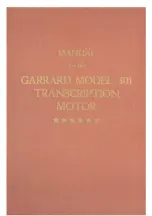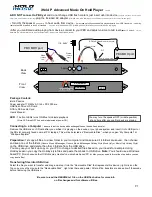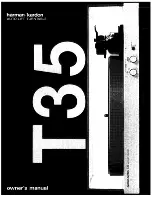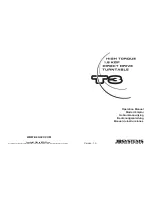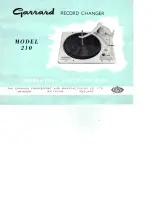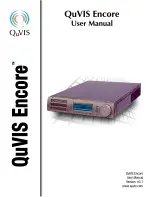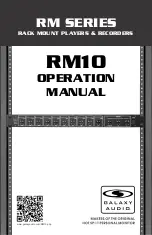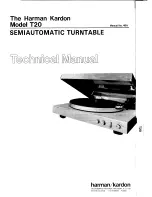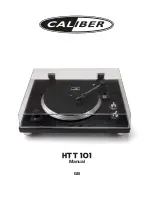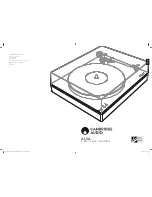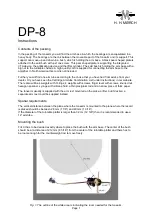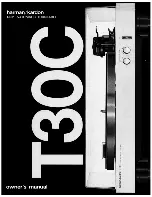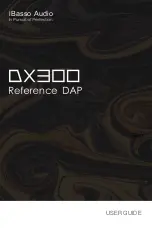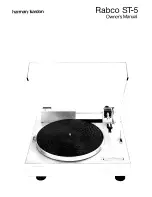
vinyl and the tip of the stylus. In
general terms, as we’re already seen,
there is a groove with two walls that
vary in height, almost independently
and the tip of the stylus traces that
movement accordingly. However, it is
necessary to get down to the
microscopic level to consider this
behaviour in more detail.
When a record is mastered (meaning,
when the master disc is created on a
lathe) the groove is cut by a heated
stylus that has a specific shape, shown
in Figure
. The depth of the groove
can range from a minimum of 25
µ
m to
a maximum of 127
µ
m, which, in turn
varies the width of the groove.
Flat face
Burninshing
facet
Cutting
edge
Direction of
cutting action
Figure 3.9: The cutting stylus used to
create the groove in the master disc.
150 µm
Goove depth and radii
33 1/3 RPM microgroove LP
130 µm
13 µm
Minimum depth
1 mil = 25 µm
Typical depth
~
38 µm
Maximum depth
5 mil = 127 µm
~
70 µm
~
250 µm
~
50 µm
0.036 mm
0.7 mil
0.5 mil
Conical
(Spherical)
Elliptical
0.2 x 0.7 mil
0.026 mm
0.036 mm
78 RPM
75 µm radius
0.15 mm
Line Contact
78 RPM
Figure 3.10: Dimensions of record grooves, drawn to scale. The figure on the left is typical for a 78 RPM shellac disc. The three grooves
on the right show the possible variation in a 33 1/3 “microgroove” LP.
The result is a groove with a varying
width and depth that are dependent on
the decisions made by the mastering
engineer, and a modulation
displacement (the left/right size of the
“wiggle”) that is dependent on the
level of the audio signal that is being
reproduced.
In a perfect situation, the stylus that is
used to play that signal back on a
turntable would have exactly the same
shape as the cutting stylus, since this
would mean that the groove is traced
in exactly the same way that it was
cut. This, however, is not practical for
a number of reasons. As a result, there
are a number of options when choosing
the shape of the playback stylus.
3.3 Tip shape
The earliest styli were the needles that
were used on 78 RPM gramophone
players. These were typically made
from steel wire that was tapered to a
conical shape, and then the tip was
rounded to a radius of about 150
µ
m,
by tumbling them in an abrasive
powder.
. This rounded curve at the tip
of the needle had a hemispherical
form, and so styli with this shape are
known as either
conical
or
spherical
.
The first styli made for “microgroove”
LP’s had the same basic shape as the
steel predecessor, but were tipped with
sapphire or diamond. The
conical/spherical shape was a good
choice due to the relative ease of
manufacture, and a typical size of that
spherical tip was about 36
µ
m in
diameter. However, as recording
techniques and equipment improved, it
was realised that there are possible
disadvantages to this design.
Remember that the side-to-side shape
of the groove is a physical
representation of the audio signal: the
higher the frequency, the smaller the
wave on the disc. However, since the
disc has a constant speed of rotation,
the speed of the stylus relative to the
groove is dependent on how far away it
is from the centre of the disc. The
closer the stylus gets to the centre, the
smaller the circumference, so the
slower the groove speed.
If we look at a 12” LP, the smallest
allowable diameter for the modulated
groove is about 120 mm, which gives
us a circumference of about 377 mm
(or 120 *
π
). The disc is rotating 33 1/3
times every minute which means that
it is making 0.56 of a rotation per
second. This, in turn
, means that the
stylus has a groove speed of 209 mm
per second. If the audio signal is a
20,000 Hz tone at the end of the
recording, then there must be 20,000
waves carved into every 209 mm on
the disc, which means that each wave
in the groove is about 0.011 mm or 11
µ
m long.
5
“The High-fidelity Phonograph Transducer” B.B. Bauer, JAES 1977 Vol 25, Number 10/11, Oct/Nov 1977
6
ibid.
7
pun intended
10




















